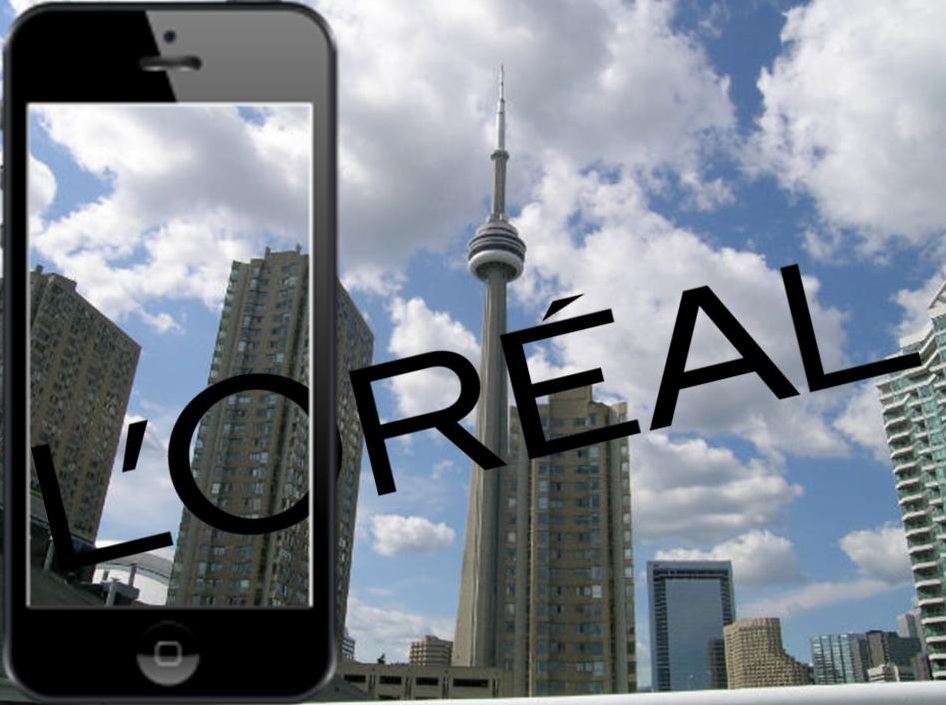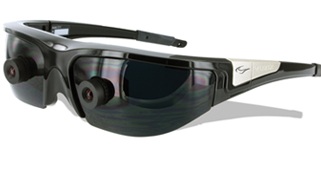The companies are using the technology to demonstrate how it can generate a shared experience.
Before the end of June, the seventh annual Luminato Festival will begin in Toronto, at which time tens of thousands of people will be filling the Canadian city’s streets for music, art, sights, and now augmented reality.
The AR exhibition is going to be a first of its kind in the world and will be making mobile marketing history.
The exhibition is being held among the thrills of this world class city’s sights and is targeted toward smartphone carrying attendees who can download a free app so that they can aim their device at different locations around David Pecaut Square so that they will be able to view a “virtual gallery” around the location that cannot be seen without the device.
The augmented reality allows the gallery to be digitally displayed over the real background of the square.
 This augmented reality exhibition will display layers of computer generated imagery overtop of the actual physical world view through the use of the app and the device camera. When attendees aim their smartphones at various parts of the square, they will be able to view various works of art that they can share, with which they can interact, and that they will be able to discuss with other people.
This augmented reality exhibition will display layers of computer generated imagery overtop of the actual physical world view through the use of the app and the device camera. When attendees aim their smartphones at various parts of the square, they will be able to view various works of art that they can share, with which they can interact, and that they will be able to discuss with other people.
As more people begin to explore the various virtual pieces of art, a heat-map will be generated and identify where people are and what they are viewing the most. Once the event has come to a close and when the app is no longer being used, a new form of digital art will be left behind. This will be a new crowdsourced version of the well recognized Lancôme rose, which will span the entire size of the square. It will be a form of tremendous digital mural to which each participant will have contributed, simply by having used the augmented reality app during the exhibition.
This will mean that the augmented reality mural will become the first ever human heat-map logo in the world and could lead to new trends in artistic and interactive mobile marketing.
 New AR goggles are giving people who are blind in one eye the chance for 3D vision.
New AR goggles are giving people who are blind in one eye the chance for 3D vision.
A university in Japan has just developed a software that has allowed 3D glasses to be converted into a high tech augmented reality that provides individuals who are blind in one eye with the ability to experience depth perception through the single healthy eye.
This is accomplished by compiling the images from the perspective of both eyes and projecting it to one.
The result is that even with a single eye, the wearer of the augmented reality glasses is capable of experiencing the perception of depth. This is a capability that is typically available only to people who have two functioning eyes. This is because the brain would usually require the perspective of both eyes to be able to compile the necessary information for judging depth.
However, the software combined with the glasses creates an augmented reality replication of that effect.
Depth perception is the ability to judge the distance that exists between two objects. For instance, gauging how far your hand is from your coffee cup on the table, or deciding how close you are to the car ahead of you in traffic. Without this technology, a single eye is not capable of providing adequate signals to the brain that will provide that perception of depth.
The augmented reality glasses that have been created to overcome that problem, even with one seeing eye, were developed by a research team at the University of Yamanashi in Japan. They used commercially available 3D glasses and linked them with the software that they developed for producing the experience of depth perception in the eye of the wearer.
At the head of the team was Xiaoyang Mao. Together, they used the Wrap 920AR glasses from Vizux Corporation, which are sold as 3D glasses for individuals with vision in both eyes. These glasses were converted into an augmented reality experience through the two camera lenses that are installed in front of each eye on what would otherwise appear to be a pair of tinted sunglasses.
The camera lenses in the augmented reality glasses capture images that would be seen by both eye. These are fed into a computer, which uses the software to generate an image for a single eye using a “defocus” effect, where some images are more crisply defined than others. This produces the same effect as depth perception, but is transmitted through a single eye.
 This augmented reality exhibition will display layers of computer generated imagery overtop of the actual physical world view through the use of the app and the device camera. When attendees aim their smartphones at various parts of the square, they will be able to view various works of art that they can share, with which they can interact, and that they will be able to discuss with other people.
This augmented reality exhibition will display layers of computer generated imagery overtop of the actual physical world view through the use of the app and the device camera. When attendees aim their smartphones at various parts of the square, they will be able to view various works of art that they can share, with which they can interact, and that they will be able to discuss with other people.
 New AR goggles are giving people who are blind in one eye the chance for 3D vision.
New AR goggles are giving people who are blind in one eye the chance for 3D vision.